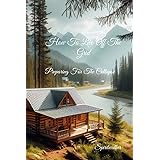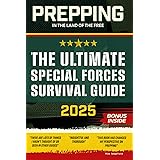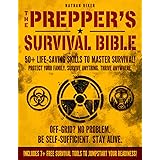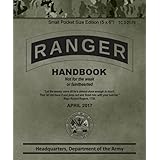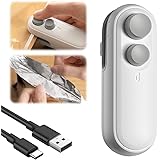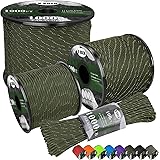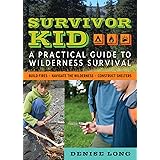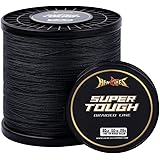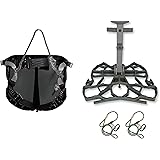Statistically, the vast majority of individuals are unprepared for extended stays in the wilderness, with estimates suggesting less than 10% possess the comprehensive skills and gear needed for survival beyond 72 hours. This stark reality underscores the critical importance of understanding and selecting the right tools for self-reliance. While the accompanying video may offer a unique perspective on the challenges of a long-term scenario like 99 nights in the forest, the underlying truth remains: appropriate preparation, including the right survival weapons, can be the difference between thriving and merely enduring.
For anyone facing the daunting prospect of prolonged isolation in nature, the term “survival weapon” extends far beyond simple self-defense. It encompasses a range of tools vital for hunting, foraging, shelter building, and basic protection against both wildlife and unforeseen human threats. Conversely, a mere offensive tool without the necessary skills or versatility becomes a dangerous liability, not an asset. Understanding this distinction is paramount for anyone serious about emergency preparedness and wilderness survival.
Essential Wilderness Survival Tools: Beyond the Blade
When considering survival weapons for an extended period, the first image that often comes to mind is a firearm, yet their utility is context-dependent. A well-chosen rifle or shotgun offers significant advantages for hunting larger game and self-defense, providing a potent deterrent in threatening situations. However, ammunition is finite, and the noise generated can attract unwanted attention, making careful consideration essential for long-term scenarios like 99 nights in the forest. Moreover, the legalities and training required for safe and effective firearm use are significant barriers for many.
Alternatively, the humble survival knife stands as perhaps the most fundamental tool in any kit. It serves countless purposes, from preparing food and starting fires to crafting other tools and providing last-resort defense. A full-tang, fixed-blade knife, ideally with a sturdy spine for batoning wood, is an indispensable asset for any serious bushcraft enthusiast. Its versatility often outweighs specialized tools in a truly dire situation, proving its worth repeatedly through various survival tasks.
Bladed Companions: Axes, Machetes, and Their Role
Beyond the primary knife, larger bladed tools like an axe or machete offer distinct advantages, particularly in different environments. An axe, whether a sturdy hatchet or a larger felling axe, is unparalleled for processing firewood, building substantial shelters, and clearing paths in temperate or boreal forests. Imagine if you needed to construct a robust log cabin or create a large fire pit for warmth during harsh winter nights; a quality axe would be your most efficient companion.
Conversely, in dense, tropical, or subtropical environments, a machete becomes the preferred choice. Its longer reach and lighter swing make it ideal for clearing thick vegetation, harvesting plant materials, and even light chopping tasks. While an axe excels at splitting and heavy cutting, a machete offers speed and reach. Selecting between these two often depends heavily on the expected terrain and the type of challenges one anticipates during their 99 nights in the forest.
Choosing Your Survival Defense: Firearms and Projectile Tools
For those prioritizing defense and reliable food procurement, firearms certainly have their place among effective survival weapons. A lightweight .22 caliber rifle, for instance, is often recommended for its low recoil, readily available and inexpensive ammunition, and its capability to take small game efficiently. While not ideal for large predators, it offers a discreet option for sustaining oneself through hunting without expending valuable large-caliber rounds.
However, for larger game or serious defensive scenarios, a more powerful rifle (like a .30-06 or .308) or a versatile shotgun (12 gauge) might be considered. These provide greater stopping power and range, but come with increased weight, louder reports, and heavier ammunition. Imagine if you encountered a large, aggressive animal or needed to signal over a long distance; the capabilities of these firearms could be invaluable. Proper training and responsible storage are non-negotiable for these tools.
Non-Firearm Projectiles: Bows, Slingshots, and Spears
Moving away from firearms, traditional projectile survival weapons offer sustainable alternatives without the reliance on manufactured ammunition. A well-crafted bow and arrow set, particularly a takedown recurve or longbow, provides a silent, repeatable hunting option once proficiency is gained. Bow hunting requires significant practice, but its ability to retrieve arrows and the abundance of natural materials for fletching and shafts make it a viable long-term solution for obtaining food during an extended period in the wilderness.
Similarly, a high-powered slingshot, especially one capable of firing steel or lead shot, can be surprisingly effective for small game at close range. It’s compact, quiet, and projectiles can often be found or improvised from pebbles. While not as powerful as a bow, its ease of carry and readiness make it an excellent supplementary tool. Furthermore, a properly fashioned spear, either thrown or thrust, is an ancient and effective hunting and defensive tool, especially for fishing or deterring animals, and can be easily improvised from available wood and a sharpened tip or attached blade.
The Underrated Survival Weapon: Skill and Knowledge
Despite the allure of specialized gear, the most potent survival weapon any individual can possess is their own knowledge and skill. A person with deep understanding of bushcraft, first aid, navigation, and wilderness ecology will invariably fare better than someone laden with expensive equipment but lacking practical experience. The ability to identify edible plants, construct a robust shelter, purify water, and track game far outweighs the immediate benefit of any single tool. This internal preparedness directly impacts how effectively one can utilize any physical survival weapons.
Moreover, the mental fortitude to endure hardship, maintain a positive attitude, and problem-solve under extreme stress is irreplaceable. Imagine if you lost your primary weapon or it became unusable; your ability to adapt, improvise, and leverage your surroundings becomes your only true defense. Investing in training, practicing skills regularly, and learning from experienced mentors are therefore the most critical steps in preparing for an extended wilderness challenge like 99 nights in the forest.
Improvisation and Versatility in Long-Term Survival
For a scenario as demanding as 99 nights in the forest, the ability to improvise and make tools serve multiple functions is paramount. A sturdy piece of paracord can become a snare, a shelter lash, or even a fishing line. A metal water bottle can be used for boiling water, cooking, or signaling. These common items, while not strictly “weapons,” contribute significantly to overall survival, reducing the need for constant direct confrontation. Therefore, viewing all gear through the lens of versatility and potential for improvisation enhances the effectiveness of every item in a survival kit.
Ultimately, selecting survival weapons for an extended stay in the wilderness is a deeply personal decision, heavily influenced by individual skills, the anticipated environment, and legal considerations. Whether you choose a dependable rifle, a versatile axe, or rely heavily on primitive skills, remember that true preparedness lies in a holistic approach, where every tool complements your knowledge and strengthens your resolve to face the challenges of 99 nights in the forest.


